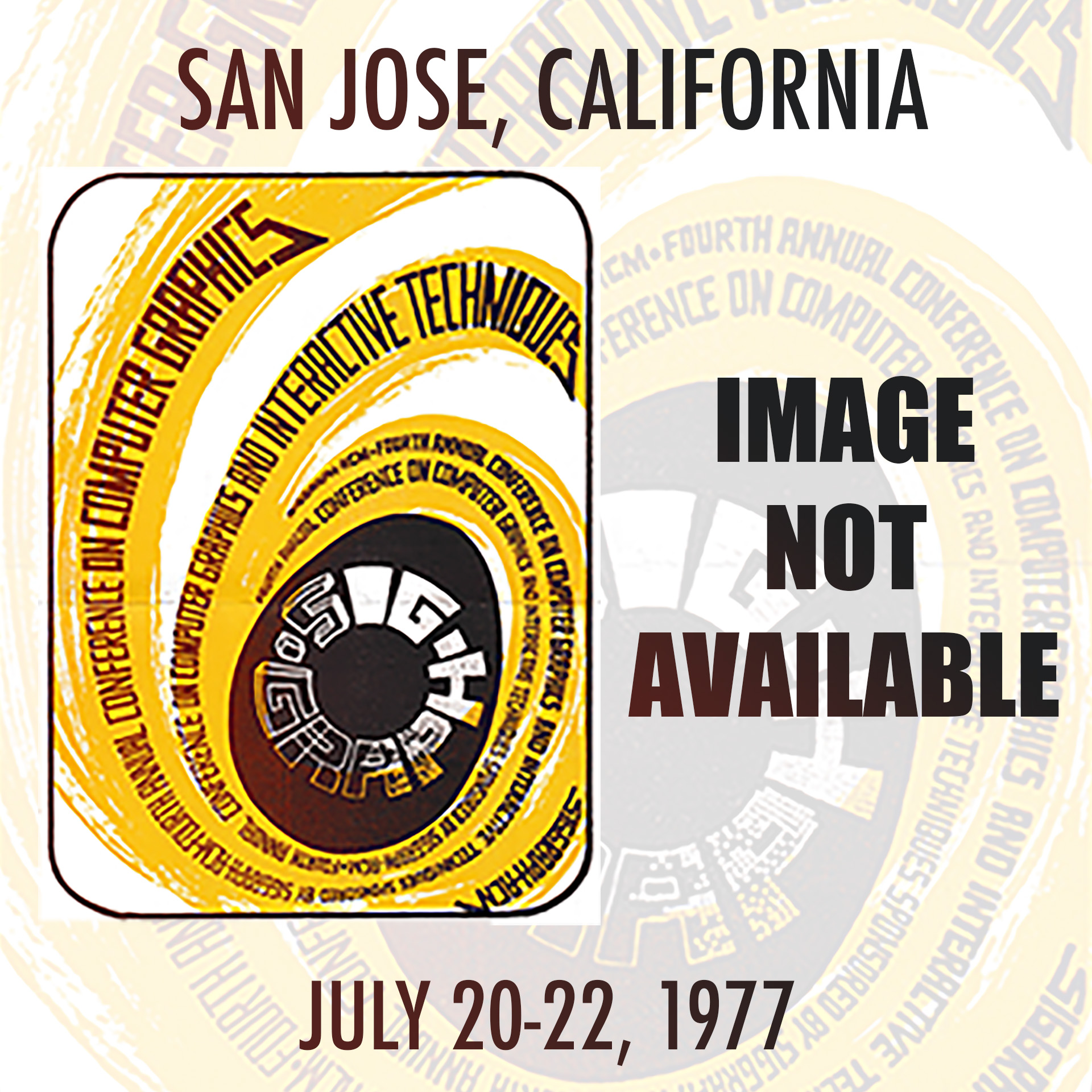“Moving, computer-generated images via integral holography” by Vickers, Smith, Levine and Cross
Conference:
Type(s):
Title:
- Moving, computer-generated images via integral holography
Presenter(s)/Author(s):
Abstract:
It is not often that a new medium for displaying three-dimensional computer-generated data comes along, so when one does, it is bound to spark a good deal of interest. Such a medium, known as the integral hologram, combines the reality of holography with the animation of movies. Like a cylinder hologram, the inte- gral hologram, when rotated, will show all sides of a holographic image. However, unlike an ordinary cylinder hologram, as the cylinder-shaped integral hologram is rotated, the image inside can grow, move, deform, or even disappear. In fact, the image can do anything a motion picture image can do because an integral hologram is made from a 35-mm black-and-white movie.
Each frame of a 1080-frame movie is transformed by a laser and the appropriate optics into a slit hologram 24 cm high and 0.7 cm wide. These slit holograms are slightly overlapped on holographic film which is wrapped around a 40-cm diameter clear plastic cylinder for viewing. When the holographic film is illumina- ted by an ordinary 100-watt light bulb from below, an observer looking into the cylinder can see the objects originally on the movie film as holographic images floating inside. The motion and detail of the holograph- ic images is very similar to that in the original movie film, but what was a black-and-white movie image becomes a rainbow-colored holographic image.
An ordinary light bulb can be used in place of a laser to “unlock” the integral hologram because of the optics used when exposing the hologram and because each slit hologram is made from a two-dimensional object — a frame of the 35-mm movie. Since two-dimensional rather than three-dimensional objects are used, the intermodulation noise is reduced, allowing integral holograms to appear much brighter than -heir laser- illuminated counterparts. Color in the image of an integral hologram is a result of the diffraction effect
of the holographic film on the white light.
Application of integral holograms to the fields of art and advertising is obvious; their potential effect on the fields of education and science is an exciting prospect. One can imagine the educational
impact of showing students an integral hologram of two molecules. As the hologram is rotated, the mole- cules could rotate and at the same time combine according to the laws governing some chemical reaction.
Already integral holograms have proven to be very valuable in trying to show complex relationships in time
and space. For example, we have discovered that some subtle motions which are imperceptible in computer- generated movies can be shown distinctly and clearly on integral holograms by simply rotating the hologram rapidly. With movies as input, integral holograms can show photographic and computer-generated data super- imposed. In fact, all the tricks of photography can be applied.
At the time of this symposium, researchers at Lawrence Livermore Laboratory have produced over 16 tech- nical movies from which integral holograms have been made. Of these, 14 were computer-generated movies. Subjects of the LLL holograms span many areas including chemistry, crystallography, biomedicine, laser
fusion, magnetic fusion, and electromagnetic field study. As a visual aid for technical presentations, an integral hologram is hard to beat, though they are somewhat bulky to transport. A new, smaller version of the integral hologram has recently been introduced by the Multiplex Company, currently the only producer of integral holograms. This smaller integral hologram should ease the portability problem somewhat.
The future hides many important possibilities for integral holography. Because the holographic image is a composite of many slit holograms, there is some distortion in the image whenever there is motion in the original movie film. An LLL student employee has made progress in solving this problem by predistorting the 35-mm movie. Other areas of future interest are the production of an integral hologram with true color and from a movie sequence longer than 1080 frames. Perhaps one day it may even be possible to eliminate the 35-mm movie from the production sequence and expose the holographic film directly from a COM device.




